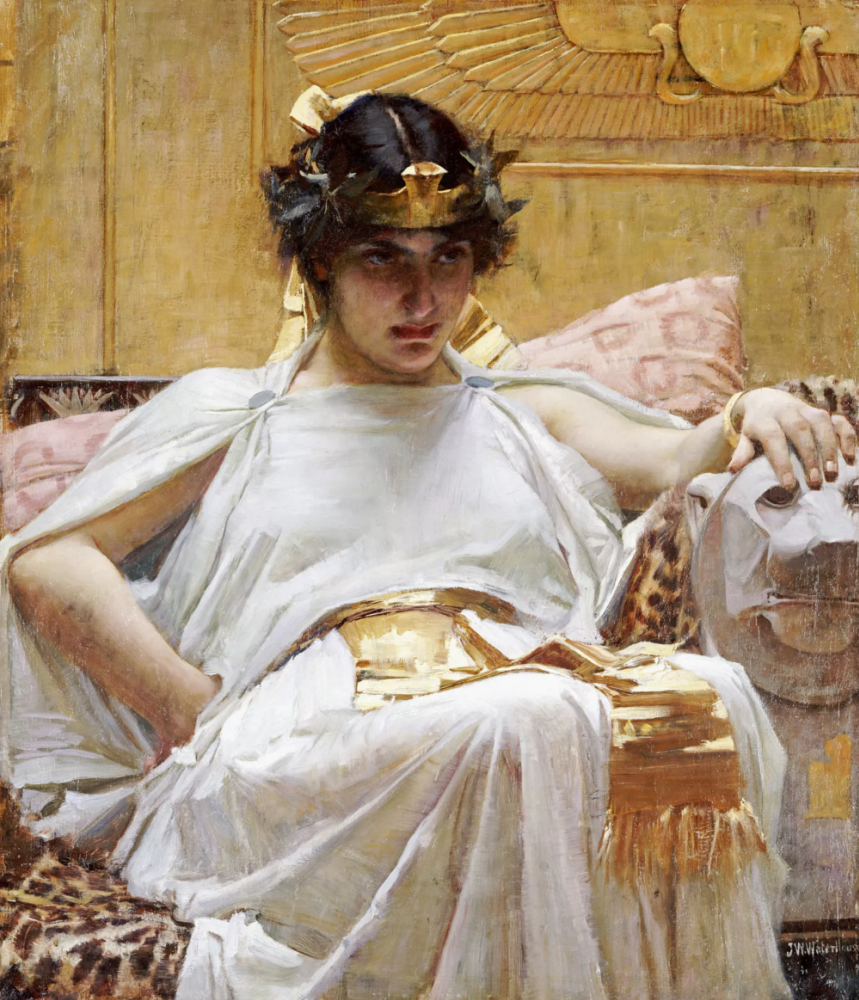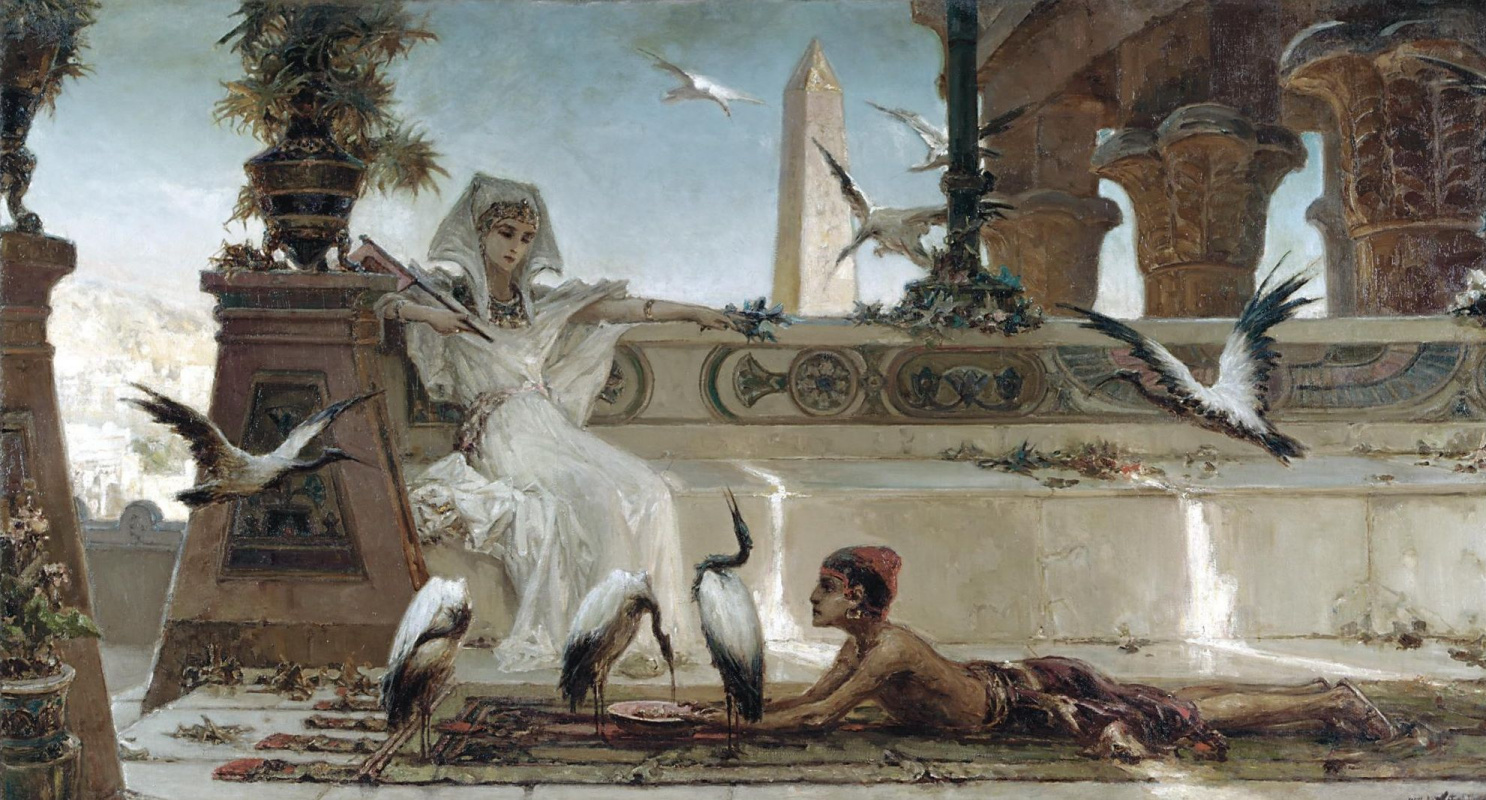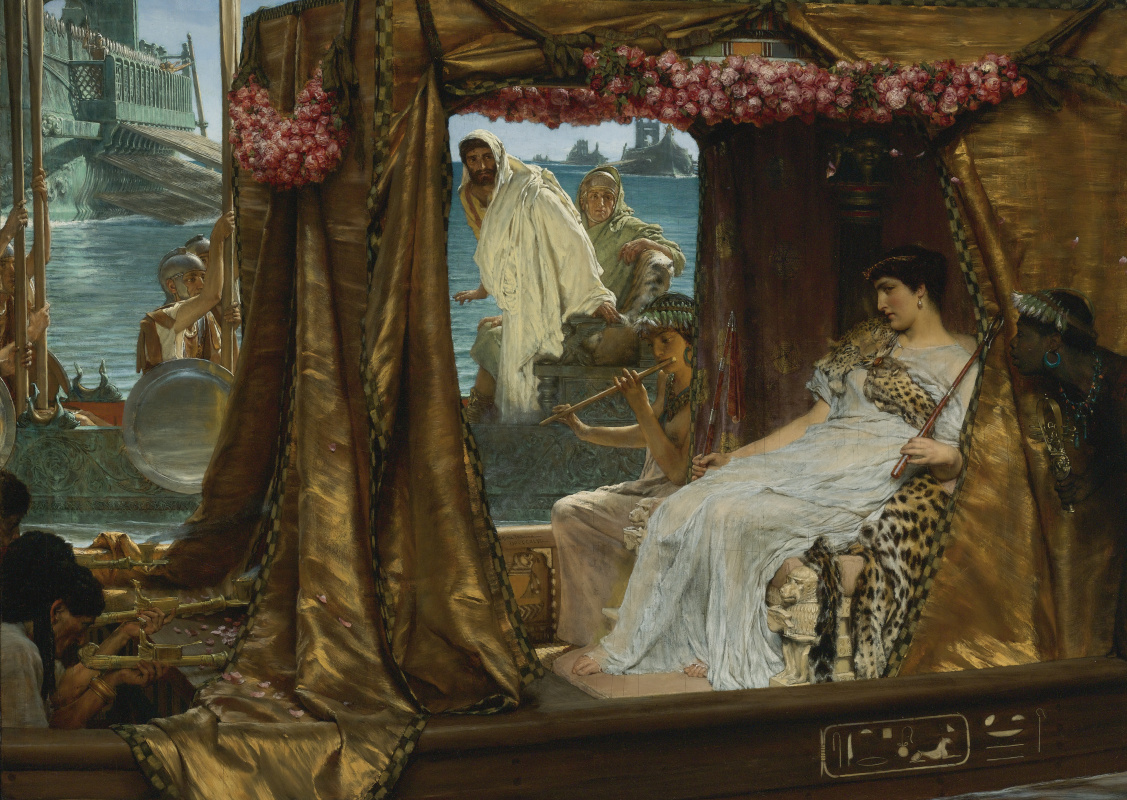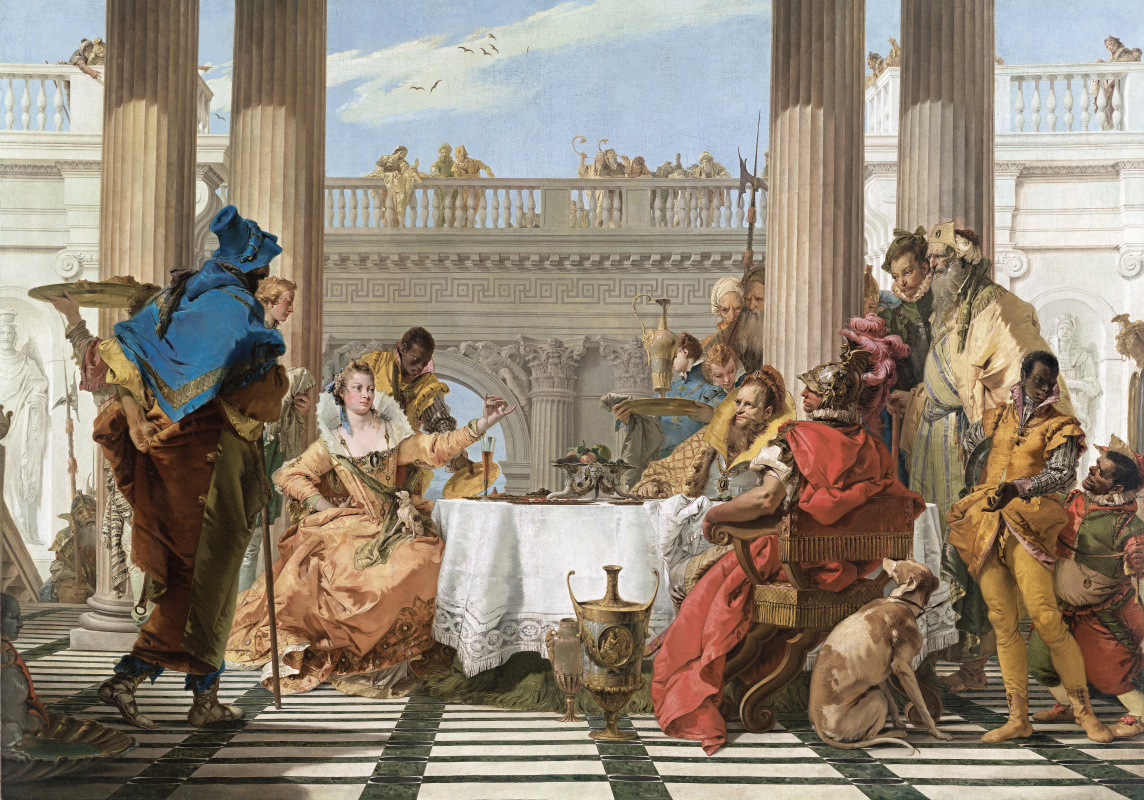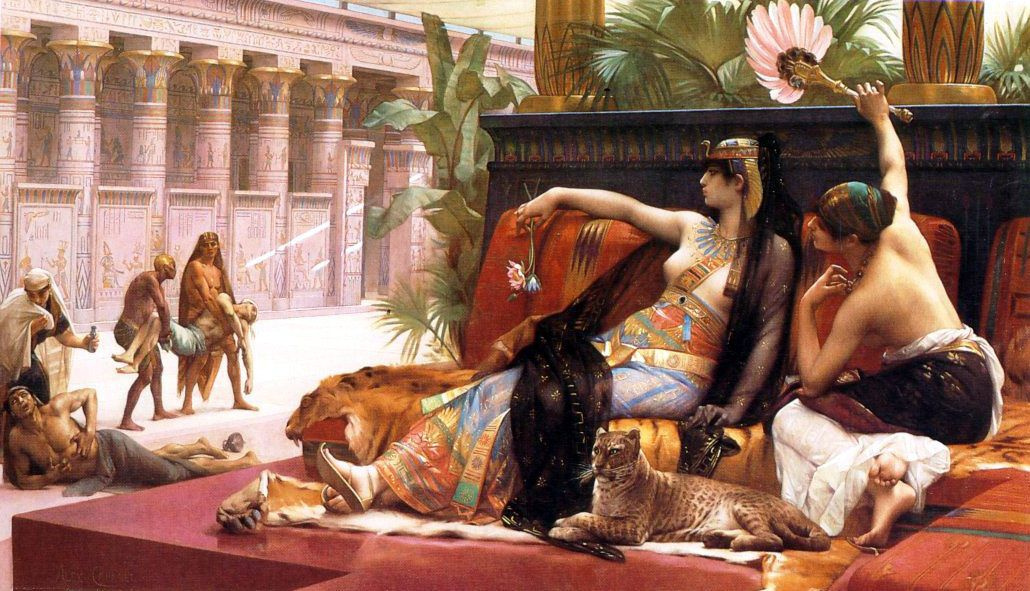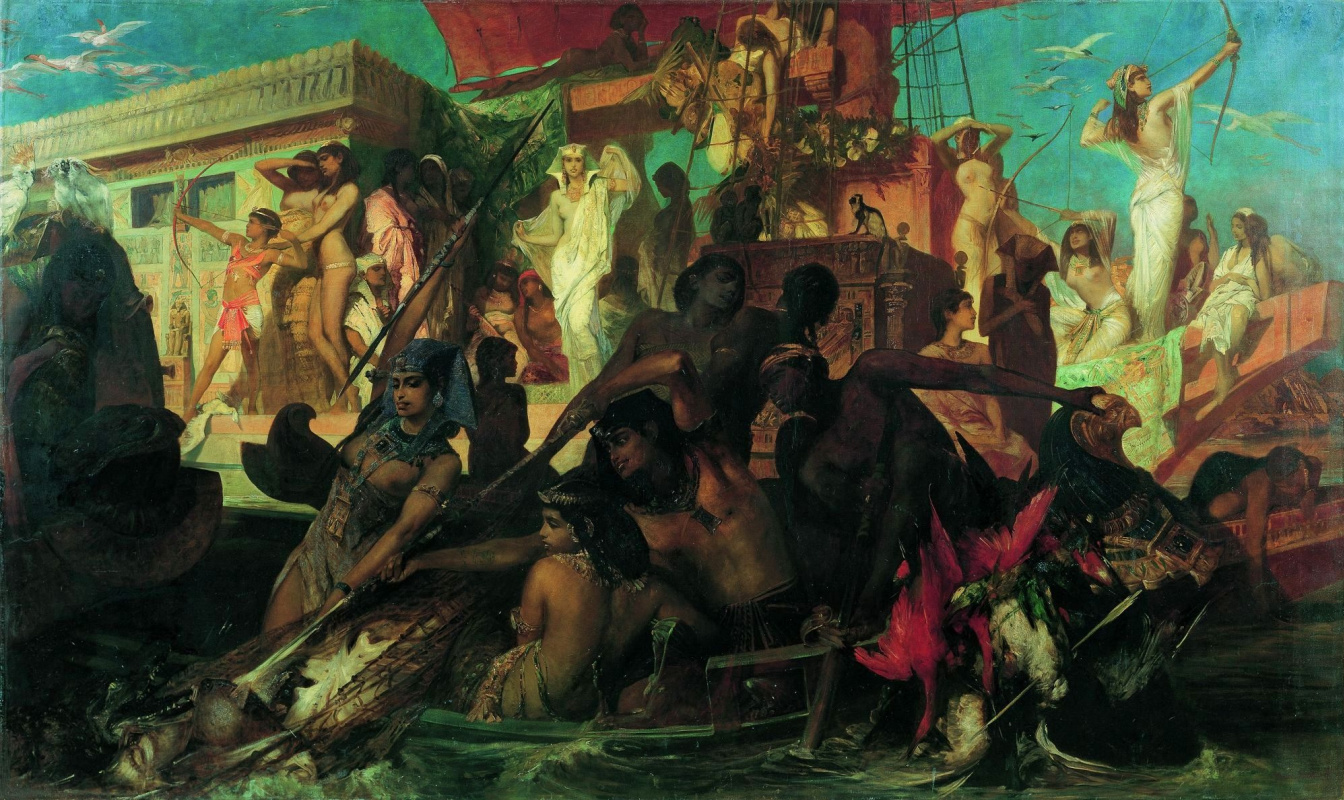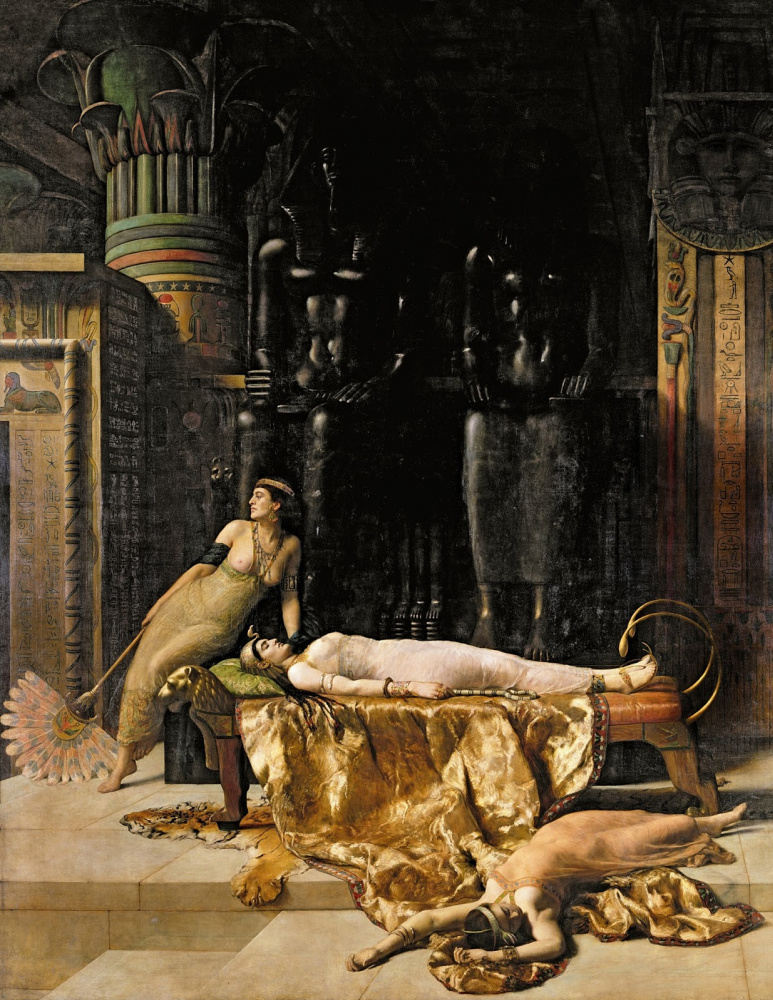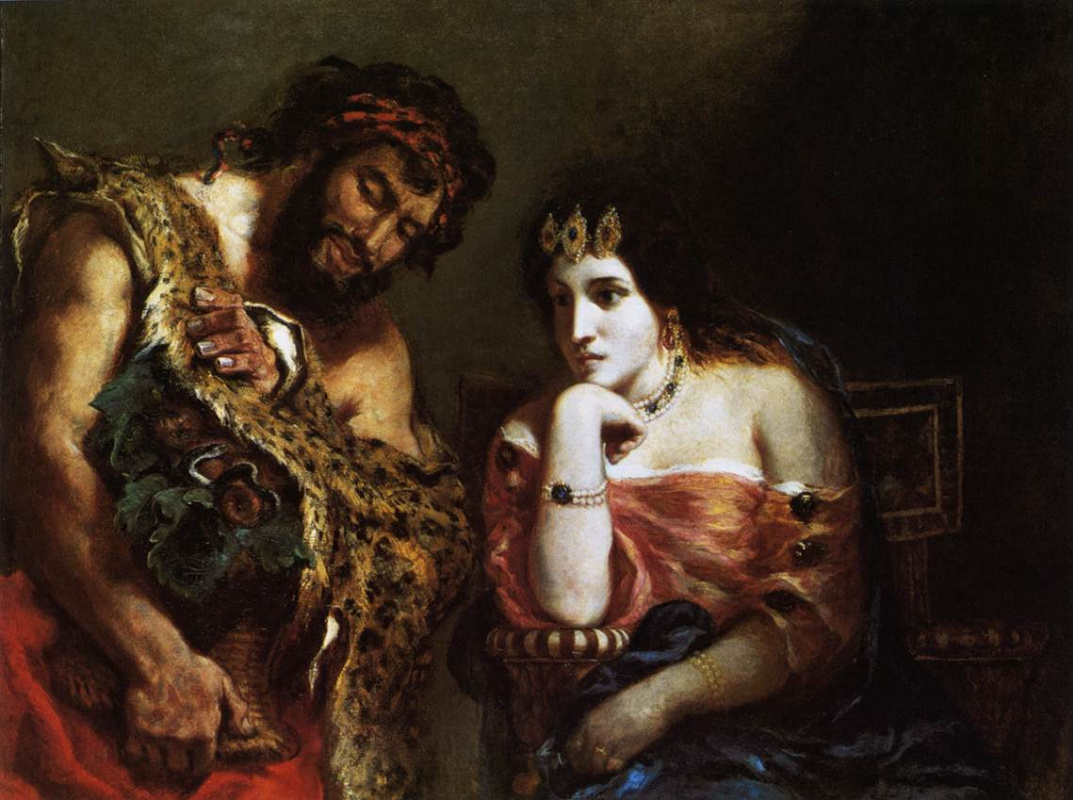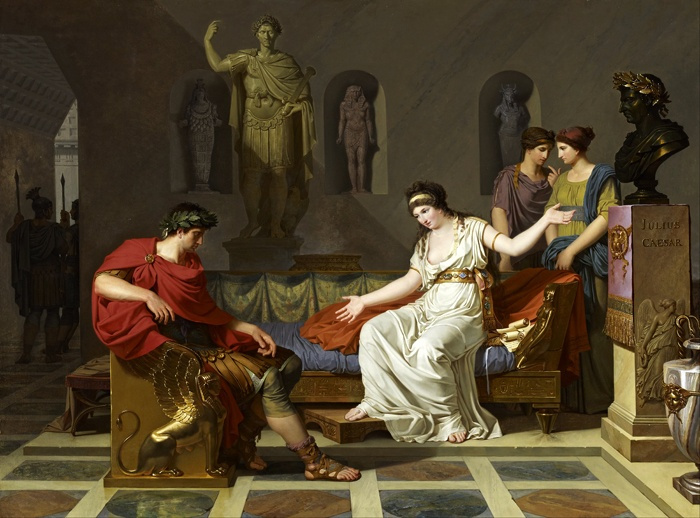Poets and warriors, enemies and friends, contemporaries and descendants, powerful empires and Hollywood movie studios fell at her feet. Seductive and deadly, Cleopatra was a clear example of how beauty can not only save the world, but also destroy it.

Game of thrones
Cleopatra VII was born in 69 BC into a noble and secured, but not quite prosperous family. Her parents Ptolemy XII and Cleopatra VI ruled Egypt. They did not have warm relations. Ptolemy neglected the culture of matrimonial behaviour (for example, the ancient historian Strabo claimed that Cleopatra VII was an illegitimate child) and was famous for his squander. His contemporaries believed that he was better at playing the flute than reigning, for this he was called Auletes (that is, a pipe player). The tension between the spouses reached its peak in 58 BC, when Auletes had to flee: Cleopatra VI and her daughter Berenice IV ruled the country for three years.Later Ptolemy Auletes returned, and not alone, but with the Roman governor Gabinius. He re-possessed the throne. They say that the daughter’s head was brought to him on a dish, and this is absolutely literally. In his will, Auletes appointed Cleopatra VII the heir to his throne. To become the queen of Egypt, she had to marry her brother Ptolemy XIII.
The Ptolemaic dynasty definitely needed a family psychologist. However, Cleopatra learned a lot from her father’s example. The history is silent about whether she played the flute well. But, when the 18-year-old Cleopatra ascended the throne as Queen Regent (her brother-husband Ptolemy XIII was still too young), she was already a ready-made politician — flexible, far-sighted, dangerous.
Cleopatra
1888, 65.4×56.8 cm
Besides these qualities, Cleopatra had another important advantage — she was beautiful. Modern commanders were shy of Cleopatra and the artists who lived later were sometimes powerless to depict her.
Legends were made about her beauty. Even Plutarch (born 76 years after Cleopatra’s death and, of course, he never heard "the very sounds of her voice") made his contribution: "The beauty of this woman was not what is called incomparable and striking at first sight, but her treatment was irresistibly charming, and therefore her whole appearance, combined with the rare persuasiveness of her speech, with the enormous charm that shone in every word, in every movement, firmly crashed into the soul. The very sounds of her voice caressed and delighted your ear, and her tongue was like a multi-stringed instrument, easily tuned in any way, in any dialect."
In a carpet
The first years of Cleopatra’s rule were unsuccessful. The Nile didn’t inundate, the local agriculture also went wrong. There were disturbances in the streets, intrigues arose in the court corridors.
Cleopatra
End XIX centuries, 135×246 cm
At first, the queen managed to push Ptolemy XIII from government. But soon Ptolemy began to pull the blanket over himself. He could hardly have managed on his own, as Cleopatra’s husband was barely 10 then. But the regent Pothinus stood behind him. Pothinus was the real puppeteer and also a eunuch, so Cleopatra’s charm did not affect him. This family didn’t use to settle disagreements peacefully: Cleopatra went to Syria to recruit an army.
Who knows how long this turbulent divorce process would last if not for the intervention of Rome. Pothinus and Ptolemy fell out of favour with Caesar. Wishing to curry favour, they overdid — they killed the commander Pompey (who sought political asylum in Egypt). Caesar was about to deal with Pompey himself. Moreover, he did not want to see a strong king on the Egyptian throne who was supported by the people. He needed a puppet, and Cleopatra, like no one else was suitable for this role.
Who knows how long this turbulent divorce process would last if not for the intervention of Rome. Pothinus and Ptolemy fell out of favour with Caesar. Wishing to curry favour, they overdid — they killed the commander Pompey (who sought political asylum in Egypt). Caesar was about to deal with Pompey himself. Moreover, he did not want to see a strong king on the Egyptian throne who was supported by the people. He needed a puppet, and Cleopatra, like no one else was suitable for this role.
While in Alexandria, Caesar invited Cleopatra to negotiations. She could only penetrate the city secretly: according to popular legend, a Sicilian admirer wrapped her in a carpet and carried her into the chambers of the great dictator.
This detail was introduced by the French painter Jean-Léon Gérôme, who always had a weakness for naked beauties and carpets, and did not miss the opportunity to bring two of his favourite subjects onto one canvas. It is possible that Gérôme also had a hand in the emergence of the phraseology "call someone on the carpet".
In fact, Cleopatra, most likely, was delivered in a less beautiful linen bag, which was much more suitable for a secret mission. One way or another, she was awarded an audience and secured the support of Rome.
The "rebellion" was suppressed, Pothinus had his head off, Ptolemy XIII tried to escape, but drowned in the Nile.
Shortly after Caesar’s departure from Alexandria, Cleopatra had a son. When grown up, he acquired a characteristic posture and facial features that were difficult not to recognize. Contemporaries nicknamed him Caesarion.
This detail was introduced by the French painter Jean-Léon Gérôme, who always had a weakness for naked beauties and carpets, and did not miss the opportunity to bring two of his favourite subjects onto one canvas. It is possible that Gérôme also had a hand in the emergence of the phraseology "call someone on the carpet".
In fact, Cleopatra, most likely, was delivered in a less beautiful linen bag, which was much more suitable for a secret mission. One way or another, she was awarded an audience and secured the support of Rome.
The "rebellion" was suppressed, Pothinus had his head off, Ptolemy XIII tried to escape, but drowned in the Nile.
Shortly after Caesar’s departure from Alexandria, Cleopatra had a son. When grown up, he acquired a characteristic posture and facial features that were difficult not to recognize. Contemporaries nicknamed him Caesarion.
Called back on the carpet
Cleopatra’s second husband (and, of course, brother) Ptolemy XIV also did not live long. At the age of 14, he suddenly died. It was rumoured that the queen had poisoned him, as the birth of her son gave her a legal co-ruler and heir in the future. However, Cleopatra’s political position remained unstable. Caesar was killed by the conspirators, another two-year crop failure threatened with new rebellions.In 41 BC, Roman commander Mark Anthony summoned Cleopatra to Cilicia, intending to replenish the budget at the expense of the Egyptian treasury. He was about to put pressure on the queen, exposing her as an accomplice to Brutus and Cassius. Indirectly, Cleopatra really could, if not provoke, then accelerate Caesar’s murder: the Republicans were very nervous about the honour and luxury he surrounded his favourite in Rome with. Cleopatra understood that it was by no means a secular conversation that awaited her. Hearing about the weaknesses of Mark Anthony (he was extremely loving and susceptible to ostentatious luxury), she prepared properly.
In Tarsus, she sailed on a ship with gilded stern, purple sails and silvered oars. The ship was controlled by maidservants dressed as nymphs, musicians played ciharas and flutes, and the queen herself, dressed as Aphrodite, was seated on a throne mounted on the deck. Mark Anthony had no chance.
In Tarsus, she sailed on a ship with gilded stern, purple sails and silvered oars. The ship was controlled by maidservants dressed as nymphs, musicians played ciharas and flutes, and the queen herself, dressed as Aphrodite, was seated on a throne mounted on the deck. Mark Anthony had no chance.
The Meeting of Antony and Cleopatra
1883, 65.4×91.4 cm
The beginning of a wonderful friendship
The hot point of the day was the feast that Cleopatra prepared for Mark Anthony upon arrival.
Cleopatra's Feast
1744, 250.3×357 cm
The queen proposed a bet to the commander — she claimed that she would spend an amount on a banquet comparable to the budget of a large-scale military campaign (Mark Anthony was just about to realize the late Caesar’s long-standing dream and break to the Parthians). At the height of the feast, she removed the earring from her ear, took the pearl from it, dissolved it in a glass of vinegar and drank the resulting cocktail in one gulp. Pliny described the pearl of Cleopatra as "the largest in the whole world, a wonderful and truly unique work of nature".
Cleopatra's Feast
1653, 156.4×149.3 cm
This trick impressed not only the famous Roman warrior. Over the millennia, it has become not so much a historical episode as an element of pop culture, and still excites hot minds. Experimenting with pearls and vinegar, modern scientists came to the conclusion that Cleopatra could quickly dissolve the jewel, if the vinegar was previously boiled or the pearl was pickled ahead of time — then the spectacular final stage could last about 10 minutes.
However, Cleopatra could, for example, make a dummy of something instant in advance — it is unlikely that a hoppy company would notice the substitution.
In a word, Mark Anthony forgot about the charges. He was, to put it mildly, rather rustic. On the famous bust, which is considered to be his image, the commander’s ears are framed by something very similar to noodles.
However, Cleopatra could, for example, make a dummy of something instant in advance — it is unlikely that a hoppy company would notice the substitution.
In a word, Mark Anthony forgot about the charges. He was, to put it mildly, rather rustic. On the famous bust, which is considered to be his image, the commander’s ears are framed by something very similar to noodles.
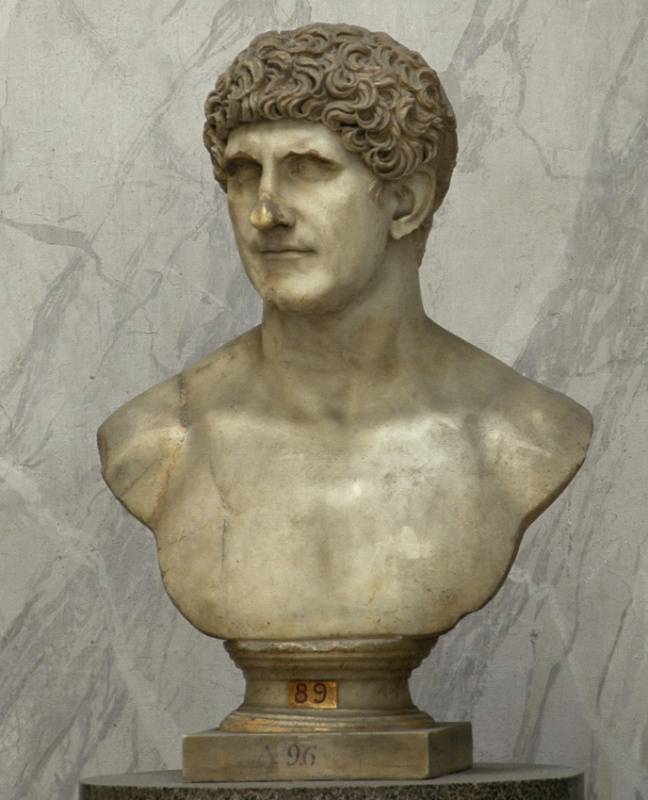
The bust of a Roman, who is traditionally identified with Mark Anthony. Late 1st century AD, The Vatican Museums
He was struck down both with the gesture, and with Cleopatra herself. As a response courtesy, he executed the queen’s sister Arsinoe. She was in Roman captivity since the defeat of Ptolemy XIII, and posed a threat to Cleopatra as a possible Egyptian pretender to the throne.
Suicide club
The romance of Cleopatra and Mark Anthony lasted for 10 years. Despite the fact that Mark Anthony married Octavian’s sister Octavia in 40 BC (by the way, he married for the fourth time), he and Cleopatra were practically inseparable for a long time. "Together with him she played dice, they drank together, hunted together, she viewed him practicing arms, and at night, when he wandered around the city in a slave dress, stopping at the doors and windows of houses and covering the simple rank owners with his usual jokes, Cleopatra was there next to Anthony, dressed to match him", Plutarch wrote.
Cleopatra testing poison on condemned prisoners
1887, 87.6×148 cm
As a historical joke, there is a story about Mark Antony, who wanted to impress his passion during fishing, and hired divers to put a rich catch on his hook. Cleopatra (who was obviously much smarter than her lover) sent her own diver, and he hooked a stockfish to the hook. In short, the joint leisure of this couple was varied and entertaining. So much entertaining that Mark Anthony almost did not notice how he lost Syria and Cilicia.
Cleopatra, on the contrary, managed to do everything: have fun, give birth (she had a daughter and two sons from Mark Anthony), make intrigues, and remove political opponents.
Cleopatra, on the contrary, managed to do everything: have fun, give birth (she had a daughter and two sons from Mark Anthony), make intrigues, and remove political opponents.
Do not be fooled by the romantic flair accompanying these relations, as Mark Anthony and Cleopatra themselves did not have any illusions about who they were and what kind of game they were playing. One of their joint ventures was the creation of the Synapothanoumenoi — "Union of those who die together" (without much enthusiasm, their close ones also entered it). The members of this organization vowed to die together -— at one moment. It was a rational decision, a kind of insurance. For years Cleopatra had been testing a variety of poisons on criminals sentenced to death to find the one that worked painlessly and quickly. She understood that people of her vintage and "profession" rarely die their own death.
Perhaps it is this shade of inevitable tragedy that puts Mark Anthony and Cleopatra on a par with other cult romantic duets — Romeo and Juliet. Or Bonnie and Clyde, if you prefer.
Perhaps it is this shade of inevitable tragedy that puts Mark Anthony and Cleopatra on a par with other cult romantic duets — Romeo and Juliet. Or Bonnie and Clyde, if you prefer.
There is no goodness in worm
Marc Anthony was rapidly losing his influence and popularity. He handed out titles and lands to his close associates, which he did not quite control, celebrated triumphs (often dubious) not in Rome, but in Alexandria, and he neglected traditions. Under the influence of his mistress, he began to play the "Hellenistic monarch", which did not add points to him even in the eyes of his devoted companions. His campaign against the Parthians was unsuccessful.The last straw that overflowed the patience of the future emperor Octavian and his supporters was the will of Mark Anthony, in which he declared Cleopatra his legal wife, and their children his heirs. In his letter to Octavian, Mark Anthony wrote: "What's come over you? Is it because I go to bed with the queen? Yes, she isn’t my wife, but it isn’t as if it’s something new, is it? Haven’t I been doing it for nine years now? And what about you? Is Livia really the only woman you go to bed with? I congratulate you, if at the time you read this letter you haven’t had Tertulla or Terentilla or Rufilla or Salvia Titisenia or the whole lot of them. Does it really matter where you get a stand —or who the woman is?" However, everything was in vain. In Rome, his alliance with Cleopatra was perceived as a threat to the empire . In 32 B.C. a civil war erupted, which Octavian proclaimed "the war of the Roman people against the Egyptian queen".
Octavian has won. In year 30 AD, his troops entered Egypt and occupied Alexandria. Cleopatra with a pair of faithful handmaidens locked themselves in the tomb building. The false news of Cleopatra’s suicide was transmitted to Mark Anthony, and he instantly committed suicide by throwing himself on his sword.
A few days later Cleopatra was found dead; her maids were also dead.
A popular legend says that the day before, the captive queen was visited by a peasant who did not arouse suspicion — along with berries, at her request, he brought a poisonous snake. It was this story that Eugène Delacroix captured on his canvas.
A few days later Cleopatra was found dead; her maids were also dead.
A popular legend says that the day before, the captive queen was visited by a peasant who did not arouse suspicion — along with berries, at her request, he brought a poisonous snake. It was this story that Eugène Delacroix captured on his canvas.
Cleopatra and the peasant
1838, 98×123 cm
After the death of Mark Anthony, the fate of Cleopatra could have been different. According to eyewitnesses, when visiting Cleopatra, the triumphant Octavian spoke to her some comforting and encouraging words. He was going to take the queen to Rome and, probably, considered her as a valuable trophy.
Cleopatra and Octavian
XVIII century
Perhaps Cleopatra could find herself a new patron, weave new networks, build new empires. But she preferred death. What prevailed in this decision — tragic romance or sober calculation, who Cleopatra was more — a devoted and loving wife or a deadly schemer — everyone has the right to decide for himself. For example, Shakespeare summarized through the words of the clown with berries: "I know the devil himself will not eat a woman".






